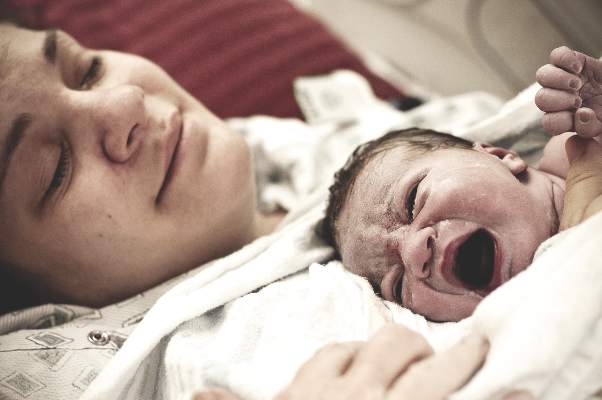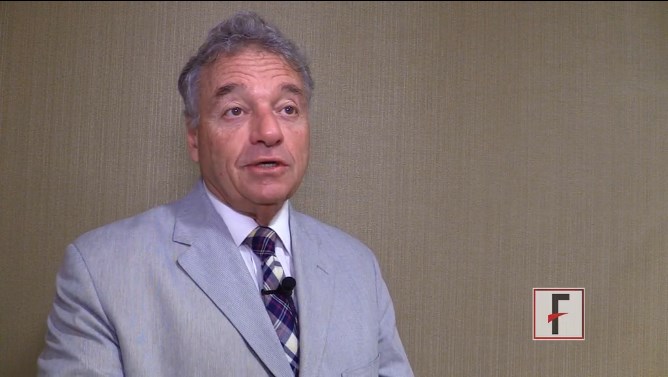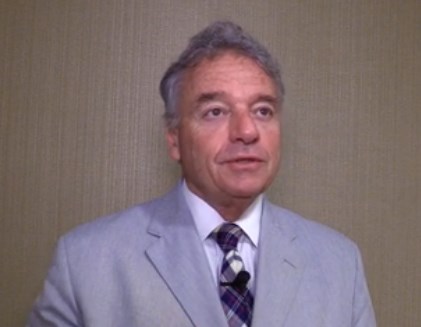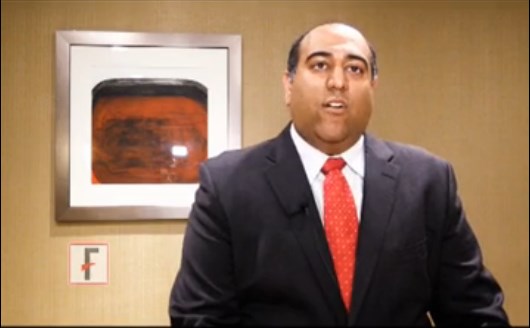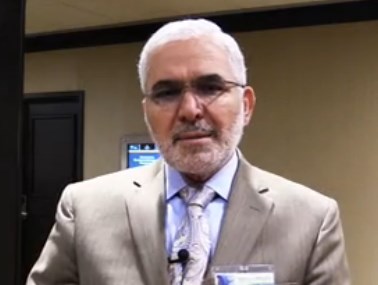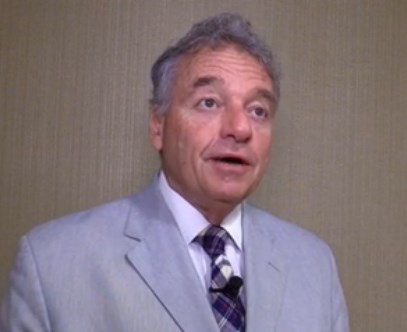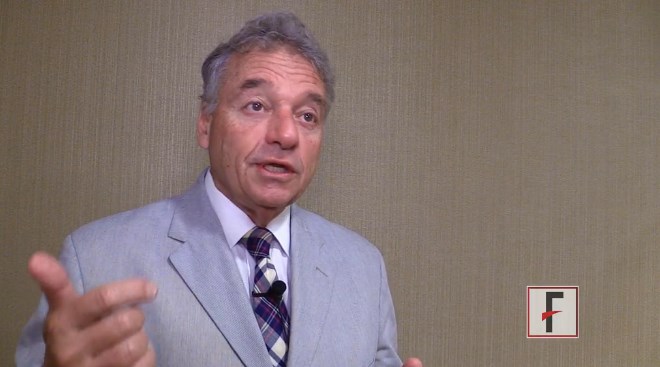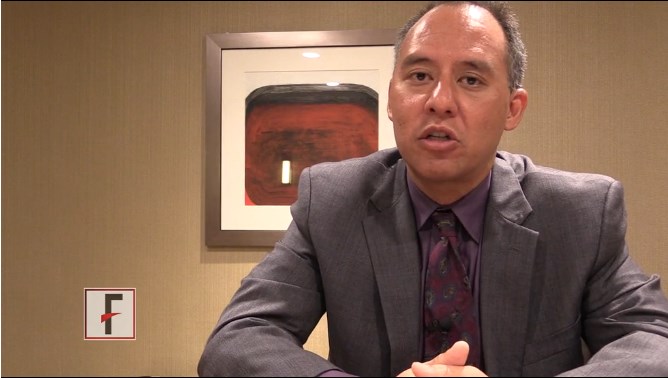User login
Pennsylvania welcomes first transgender physician general
Before her appointment earlier this year by Gov. Tom Wolf (D-Pa.) as the state’s physician general, Dr. Rachel Levine was vice chair for clinical affairs in the department of pediatrics and chief of the division of adolescent medicine and eating disorders at Penn State Hershey Children’s Hospital at the Penn State Hershey Medical Center. While on the faculty there, she decided to transition from her male birth sex to that of female.
Instead of being “marginalized, I was welcomed,” Dr. Levine said in an interview. “The faculty and administration were fantastic.”
That acceptance fuels Dr. Levine’s optimism that the medical profession’s sensitivity to the needs of the transgender community, including adolescents who seek to transition, is growing.
Just how many transgender Americans there are is unknown, according to Dr. Levine. “The statistics aren’t clear. I’ve heard one in a thousand, one in ten thousand, and one in three thousand. No one really knows. It depends on how you ask the question and what surveys you look at.”
But cultural awareness is growing, she said, which makes people more willing to identify themselves as a transgender person.
At the same time, she added, the medical community has more well-established standards of care that, 10 years from now, “will not seem as unique as they do now.”
She pointed to guidelines for developing, maintaining, and treating sexual characteristics in transgender persons published as far back as 2009 by the Endocrine Society and the establishment in the last decade of adolescent transgender medicine programs at the Children’s Hospital of Philadelphia, Boston Children’s Hospital, Children’s National Health System (Washington, D.C.), and the Center for Transyouth Health and Development at Children’s Hospital Los Angeles.
“It gets better. Society is evolving,” she said. That’s Dr. Levine’s message to everyone, but especially young people who may be questioning their sexual identity and fearing what might happen if they do not conform.
“What I like to emphasize is that I wasn’t nominated because I am an openly transgender woman, but they didn’t shy away from it. I was judged purely on my qualifications,” she said. “And the state senate, which is dominated by Republicans, to their great credit, viewed me on my professional qualifications and I was unanimously confirmed.”
On Twitter @whitneymcknight
Before her appointment earlier this year by Gov. Tom Wolf (D-Pa.) as the state’s physician general, Dr. Rachel Levine was vice chair for clinical affairs in the department of pediatrics and chief of the division of adolescent medicine and eating disorders at Penn State Hershey Children’s Hospital at the Penn State Hershey Medical Center. While on the faculty there, she decided to transition from her male birth sex to that of female.
Instead of being “marginalized, I was welcomed,” Dr. Levine said in an interview. “The faculty and administration were fantastic.”
That acceptance fuels Dr. Levine’s optimism that the medical profession’s sensitivity to the needs of the transgender community, including adolescents who seek to transition, is growing.
Just how many transgender Americans there are is unknown, according to Dr. Levine. “The statistics aren’t clear. I’ve heard one in a thousand, one in ten thousand, and one in three thousand. No one really knows. It depends on how you ask the question and what surveys you look at.”
But cultural awareness is growing, she said, which makes people more willing to identify themselves as a transgender person.
At the same time, she added, the medical community has more well-established standards of care that, 10 years from now, “will not seem as unique as they do now.”
She pointed to guidelines for developing, maintaining, and treating sexual characteristics in transgender persons published as far back as 2009 by the Endocrine Society and the establishment in the last decade of adolescent transgender medicine programs at the Children’s Hospital of Philadelphia, Boston Children’s Hospital, Children’s National Health System (Washington, D.C.), and the Center for Transyouth Health and Development at Children’s Hospital Los Angeles.
“It gets better. Society is evolving,” she said. That’s Dr. Levine’s message to everyone, but especially young people who may be questioning their sexual identity and fearing what might happen if they do not conform.
“What I like to emphasize is that I wasn’t nominated because I am an openly transgender woman, but they didn’t shy away from it. I was judged purely on my qualifications,” she said. “And the state senate, which is dominated by Republicans, to their great credit, viewed me on my professional qualifications and I was unanimously confirmed.”
On Twitter @whitneymcknight
Before her appointment earlier this year by Gov. Tom Wolf (D-Pa.) as the state’s physician general, Dr. Rachel Levine was vice chair for clinical affairs in the department of pediatrics and chief of the division of adolescent medicine and eating disorders at Penn State Hershey Children’s Hospital at the Penn State Hershey Medical Center. While on the faculty there, she decided to transition from her male birth sex to that of female.
Instead of being “marginalized, I was welcomed,” Dr. Levine said in an interview. “The faculty and administration were fantastic.”
That acceptance fuels Dr. Levine’s optimism that the medical profession’s sensitivity to the needs of the transgender community, including adolescents who seek to transition, is growing.
Just how many transgender Americans there are is unknown, according to Dr. Levine. “The statistics aren’t clear. I’ve heard one in a thousand, one in ten thousand, and one in three thousand. No one really knows. It depends on how you ask the question and what surveys you look at.”
But cultural awareness is growing, she said, which makes people more willing to identify themselves as a transgender person.
At the same time, she added, the medical community has more well-established standards of care that, 10 years from now, “will not seem as unique as they do now.”
She pointed to guidelines for developing, maintaining, and treating sexual characteristics in transgender persons published as far back as 2009 by the Endocrine Society and the establishment in the last decade of adolescent transgender medicine programs at the Children’s Hospital of Philadelphia, Boston Children’s Hospital, Children’s National Health System (Washington, D.C.), and the Center for Transyouth Health and Development at Children’s Hospital Los Angeles.
“It gets better. Society is evolving,” she said. That’s Dr. Levine’s message to everyone, but especially young people who may be questioning their sexual identity and fearing what might happen if they do not conform.
“What I like to emphasize is that I wasn’t nominated because I am an openly transgender woman, but they didn’t shy away from it. I was judged purely on my qualifications,” she said. “And the state senate, which is dominated by Republicans, to their great credit, viewed me on my professional qualifications and I was unanimously confirmed.”
On Twitter @whitneymcknight
Joint Commission offers perinatal care certification
Joint Commission-accredited health care organizations looking to up their perinatal care credentials now can, thanks to a new Perinatal Care Certification program.
The program was developed by the Joint Commission in response to data from the World Health Organization that shows at least 1,200 American women die during pregnancy or in childbirth annually. An additional 60,000 women in the U.S. suffer near-fatal perinatal complications.
“The certification will give providers an unparalleled advantage when it comes to preparing mothers for labor and delivery, while helping mothers and newborns if complications arise,” Wendi Roberts, executive director of The Joint Commission’s Certification Program, said in a statement.
The certification program, which covers prenatal care through postpartum care, requires early identification of high-risk pregnancies and births, transfers for women and babies who require a higher level of care, and ongoing quality improvement processes.
The program is aimed at reducing maternal and infant mortality and complications, unnecessary induction of labor, elective deliveries, and prematurity rates.
Along with improving patient outcomes, the program could also drive down the cost of maternity care, which the Joint Commission said reached $60 billion in 2012 the United States alone. Hospitals may be able to reduce costs associated with longer length of stay due to complications, according to the Joint Commission.
On Twitter @whitneymcknight
Joint Commission-accredited health care organizations looking to up their perinatal care credentials now can, thanks to a new Perinatal Care Certification program.
The program was developed by the Joint Commission in response to data from the World Health Organization that shows at least 1,200 American women die during pregnancy or in childbirth annually. An additional 60,000 women in the U.S. suffer near-fatal perinatal complications.
“The certification will give providers an unparalleled advantage when it comes to preparing mothers for labor and delivery, while helping mothers and newborns if complications arise,” Wendi Roberts, executive director of The Joint Commission’s Certification Program, said in a statement.
The certification program, which covers prenatal care through postpartum care, requires early identification of high-risk pregnancies and births, transfers for women and babies who require a higher level of care, and ongoing quality improvement processes.
The program is aimed at reducing maternal and infant mortality and complications, unnecessary induction of labor, elective deliveries, and prematurity rates.
Along with improving patient outcomes, the program could also drive down the cost of maternity care, which the Joint Commission said reached $60 billion in 2012 the United States alone. Hospitals may be able to reduce costs associated with longer length of stay due to complications, according to the Joint Commission.
On Twitter @whitneymcknight
Joint Commission-accredited health care organizations looking to up their perinatal care credentials now can, thanks to a new Perinatal Care Certification program.
The program was developed by the Joint Commission in response to data from the World Health Organization that shows at least 1,200 American women die during pregnancy or in childbirth annually. An additional 60,000 women in the U.S. suffer near-fatal perinatal complications.
“The certification will give providers an unparalleled advantage when it comes to preparing mothers for labor and delivery, while helping mothers and newborns if complications arise,” Wendi Roberts, executive director of The Joint Commission’s Certification Program, said in a statement.
The certification program, which covers prenatal care through postpartum care, requires early identification of high-risk pregnancies and births, transfers for women and babies who require a higher level of care, and ongoing quality improvement processes.
The program is aimed at reducing maternal and infant mortality and complications, unnecessary induction of labor, elective deliveries, and prematurity rates.
Along with improving patient outcomes, the program could also drive down the cost of maternity care, which the Joint Commission said reached $60 billion in 2012 the United States alone. Hospitals may be able to reduce costs associated with longer length of stay due to complications, according to the Joint Commission.
On Twitter @whitneymcknight
MOC changes intended to make process simpler, more impactful
Leveraging the maintenance of certification (MOC) requirements for better patient outcomes and higher reimbursements may now be easier because of recent policy changes at the American Board of Pediatrics.
“I think pediatricians have seen MOC [requirements] as onerous, but it’s a two-edged sword,” Dr. Francis E. Rushton, Jr., medical director of South Carolina’s QTIP (Quality Through Innovation in Pediatrics) Program, said in an interview. “This whole issue about forcing practitioners to think about whether they are achieving the health care goals that they intend for their patients – from a philosophical viewpoint, that’s good. From a bureaucratic standpoint, it’s been a real pain because in the past, to get their certification, pediatricians had to do things that didn’t necessarily mean anything to them in their practice.”
Following a barrage of complaints, the ABP earlier this year retooled parts of its MOC program, especially Part 4, which focuses on quality improvement and accounts for 40% of recertification credits every 5 years.
“Now pediatricians can decide what matters to them in their practice, and then they can apply quality-improvement science to reach those goals,” Dr. Virginia A. Moyer, ABP vice president of maintenance certification and quality, said in an interview.
Notably, the ABP has simplified its qualification process for “do-it-yourself” quality-improvement initiatives in practices of 10 members or less. Previously, requirements for Part 4 DIY offerings were largely based on the “types of projects coming out of large institutions,” and largely missed the mark for smaller practices, Dr. Moyer said. Fees have been lowered by as much as half and scaled to practice size as well.
Importantly, ABP now offers Part 4 credit for to any practice that is National Committee for Quality Assurance (NCQA) accredited as a patient-centered medical home. “That’s huge,” Dr. Moyer said. “There are probably 8,000 pediatricians in the country who are eligible for that, and the standards are rigorous.”
Allowing pediatricians to earn two distinctions with one task is a way to “use bureaucracy to [pediatricians’] advantage so they learn something new, improve outcomes, and potentially increase their reimbursements,” said Dr. Rushton. “And it gives pediatricians the tools they need to deal with the marketplace’s new focus on value.”
The American Academy of Pediatrics also supports streamlining accreditation activities. “The changes the ABP has made to their MOC Part 4 guidelines will make it easier for pediatricians to obtain MOC credit for quality improvement they are doing in their own practices,” Dr. Sandra G. Hassink, AAP president, said in an interview. Dr. Hassink said that in 2016, the AAP will launch an online tool to help smaller practices either lead or partner with other small groups to apply MOC-eligible quality improvement projects that “are based on accepted improvement science and methodology” to their practices.
Indeed, over the past 2 decades, advances in quality-improvement science has allowed more precise measurement of patient outcomes, helping to supplant fee-for-service payments with value-based care. According to Dr. Wendy Davis, associate director of the National Improvement Partnership Network and a professor of pediatrics at the University of Vermont, Burlington, this means that pediatricians who completed their training prior to the early 1990s often have the largest learning curve when it comes to targeting quality-improvement goals and crafting a plan to reach those goals.
“An accountable care organization overseeing health care delivery across many different practices and settings has to be sure that what they say is important to practice aligns with what the clinicians think is important,” said Dr. Davis. “Then the clinicians need to understand how to identify, measure, and create improvement processes to ensure what they believe will help improve patient care is also what they are evaluated against for reimbursement.”
The new MOC Part 4 pathways should help, according to Dr. Moyer. “We have tried very hard to use the kinds of measures that people would be collecting anyway. For pediatricians just getting started in [quality improvement], it really makes sense for them to do the kinds of projects that their insurers or accountable care organizations are pushing them to do.” Receiving the MOC credit for these projects, she said, will be evidence of their progress.
DIY quality-improvement credits are based on projects that follow a basic formula: identifying a gap in quality, stating the goal for decreasing or eliminating that gap, planning for how to do that, proving the plan was enacted, and demonstrating it was measured sequentially at least three times. Projects are typically prospective and can count for Part 4 credits more than once if the project continues over the course of more than one accreditation cycle. Small practices within larger institutions may also use this DIY model, or may show proof of having participated in institutional portfolio quality improvement programs.
For all physicians in a group to receive MOC credit, Dr. Moyer said they must be able to demonstrate they were “intellectually engaged” in all phases of the project. Participation is verified through a physician’s self-attestation that includes a brief, written “reflection” on the experience, and attestation from the project leader, Dr. Moyer said.
Dr. Chuck Norlin of the department of pediatrics at the University of Utah, Salt Lake City, said that he wonders if that will be enough to evaluate whether a physician was a “bystander, or was substantively involved in the process. Measuring self-attestation is challenging. It seems like it might be too easy for one or two physicians to do all the work.”
While quality improvement is not new in pediatrics, the timely reporting of the data is. “Using the MOC as a carrot does not seem to have increased the interest in participating in quality improvement by much, but it has made it much easier to get data back from the participating clinicians who now see not getting their MOC credit as the stick,” Dr. Norlin said.
On Twitter @whitneymcknight
Leveraging the maintenance of certification (MOC) requirements for better patient outcomes and higher reimbursements may now be easier because of recent policy changes at the American Board of Pediatrics.
“I think pediatricians have seen MOC [requirements] as onerous, but it’s a two-edged sword,” Dr. Francis E. Rushton, Jr., medical director of South Carolina’s QTIP (Quality Through Innovation in Pediatrics) Program, said in an interview. “This whole issue about forcing practitioners to think about whether they are achieving the health care goals that they intend for their patients – from a philosophical viewpoint, that’s good. From a bureaucratic standpoint, it’s been a real pain because in the past, to get their certification, pediatricians had to do things that didn’t necessarily mean anything to them in their practice.”
Following a barrage of complaints, the ABP earlier this year retooled parts of its MOC program, especially Part 4, which focuses on quality improvement and accounts for 40% of recertification credits every 5 years.
“Now pediatricians can decide what matters to them in their practice, and then they can apply quality-improvement science to reach those goals,” Dr. Virginia A. Moyer, ABP vice president of maintenance certification and quality, said in an interview.
Notably, the ABP has simplified its qualification process for “do-it-yourself” quality-improvement initiatives in practices of 10 members or less. Previously, requirements for Part 4 DIY offerings were largely based on the “types of projects coming out of large institutions,” and largely missed the mark for smaller practices, Dr. Moyer said. Fees have been lowered by as much as half and scaled to practice size as well.
Importantly, ABP now offers Part 4 credit for to any practice that is National Committee for Quality Assurance (NCQA) accredited as a patient-centered medical home. “That’s huge,” Dr. Moyer said. “There are probably 8,000 pediatricians in the country who are eligible for that, and the standards are rigorous.”
Allowing pediatricians to earn two distinctions with one task is a way to “use bureaucracy to [pediatricians’] advantage so they learn something new, improve outcomes, and potentially increase their reimbursements,” said Dr. Rushton. “And it gives pediatricians the tools they need to deal with the marketplace’s new focus on value.”
The American Academy of Pediatrics also supports streamlining accreditation activities. “The changes the ABP has made to their MOC Part 4 guidelines will make it easier for pediatricians to obtain MOC credit for quality improvement they are doing in their own practices,” Dr. Sandra G. Hassink, AAP president, said in an interview. Dr. Hassink said that in 2016, the AAP will launch an online tool to help smaller practices either lead or partner with other small groups to apply MOC-eligible quality improvement projects that “are based on accepted improvement science and methodology” to their practices.
Indeed, over the past 2 decades, advances in quality-improvement science has allowed more precise measurement of patient outcomes, helping to supplant fee-for-service payments with value-based care. According to Dr. Wendy Davis, associate director of the National Improvement Partnership Network and a professor of pediatrics at the University of Vermont, Burlington, this means that pediatricians who completed their training prior to the early 1990s often have the largest learning curve when it comes to targeting quality-improvement goals and crafting a plan to reach those goals.
“An accountable care organization overseeing health care delivery across many different practices and settings has to be sure that what they say is important to practice aligns with what the clinicians think is important,” said Dr. Davis. “Then the clinicians need to understand how to identify, measure, and create improvement processes to ensure what they believe will help improve patient care is also what they are evaluated against for reimbursement.”
The new MOC Part 4 pathways should help, according to Dr. Moyer. “We have tried very hard to use the kinds of measures that people would be collecting anyway. For pediatricians just getting started in [quality improvement], it really makes sense for them to do the kinds of projects that their insurers or accountable care organizations are pushing them to do.” Receiving the MOC credit for these projects, she said, will be evidence of their progress.
DIY quality-improvement credits are based on projects that follow a basic formula: identifying a gap in quality, stating the goal for decreasing or eliminating that gap, planning for how to do that, proving the plan was enacted, and demonstrating it was measured sequentially at least three times. Projects are typically prospective and can count for Part 4 credits more than once if the project continues over the course of more than one accreditation cycle. Small practices within larger institutions may also use this DIY model, or may show proof of having participated in institutional portfolio quality improvement programs.
For all physicians in a group to receive MOC credit, Dr. Moyer said they must be able to demonstrate they were “intellectually engaged” in all phases of the project. Participation is verified through a physician’s self-attestation that includes a brief, written “reflection” on the experience, and attestation from the project leader, Dr. Moyer said.
Dr. Chuck Norlin of the department of pediatrics at the University of Utah, Salt Lake City, said that he wonders if that will be enough to evaluate whether a physician was a “bystander, or was substantively involved in the process. Measuring self-attestation is challenging. It seems like it might be too easy for one or two physicians to do all the work.”
While quality improvement is not new in pediatrics, the timely reporting of the data is. “Using the MOC as a carrot does not seem to have increased the interest in participating in quality improvement by much, but it has made it much easier to get data back from the participating clinicians who now see not getting their MOC credit as the stick,” Dr. Norlin said.
On Twitter @whitneymcknight
Leveraging the maintenance of certification (MOC) requirements for better patient outcomes and higher reimbursements may now be easier because of recent policy changes at the American Board of Pediatrics.
“I think pediatricians have seen MOC [requirements] as onerous, but it’s a two-edged sword,” Dr. Francis E. Rushton, Jr., medical director of South Carolina’s QTIP (Quality Through Innovation in Pediatrics) Program, said in an interview. “This whole issue about forcing practitioners to think about whether they are achieving the health care goals that they intend for their patients – from a philosophical viewpoint, that’s good. From a bureaucratic standpoint, it’s been a real pain because in the past, to get their certification, pediatricians had to do things that didn’t necessarily mean anything to them in their practice.”
Following a barrage of complaints, the ABP earlier this year retooled parts of its MOC program, especially Part 4, which focuses on quality improvement and accounts for 40% of recertification credits every 5 years.
“Now pediatricians can decide what matters to them in their practice, and then they can apply quality-improvement science to reach those goals,” Dr. Virginia A. Moyer, ABP vice president of maintenance certification and quality, said in an interview.
Notably, the ABP has simplified its qualification process for “do-it-yourself” quality-improvement initiatives in practices of 10 members or less. Previously, requirements for Part 4 DIY offerings were largely based on the “types of projects coming out of large institutions,” and largely missed the mark for smaller practices, Dr. Moyer said. Fees have been lowered by as much as half and scaled to practice size as well.
Importantly, ABP now offers Part 4 credit for to any practice that is National Committee for Quality Assurance (NCQA) accredited as a patient-centered medical home. “That’s huge,” Dr. Moyer said. “There are probably 8,000 pediatricians in the country who are eligible for that, and the standards are rigorous.”
Allowing pediatricians to earn two distinctions with one task is a way to “use bureaucracy to [pediatricians’] advantage so they learn something new, improve outcomes, and potentially increase their reimbursements,” said Dr. Rushton. “And it gives pediatricians the tools they need to deal with the marketplace’s new focus on value.”
The American Academy of Pediatrics also supports streamlining accreditation activities. “The changes the ABP has made to their MOC Part 4 guidelines will make it easier for pediatricians to obtain MOC credit for quality improvement they are doing in their own practices,” Dr. Sandra G. Hassink, AAP president, said in an interview. Dr. Hassink said that in 2016, the AAP will launch an online tool to help smaller practices either lead or partner with other small groups to apply MOC-eligible quality improvement projects that “are based on accepted improvement science and methodology” to their practices.
Indeed, over the past 2 decades, advances in quality-improvement science has allowed more precise measurement of patient outcomes, helping to supplant fee-for-service payments with value-based care. According to Dr. Wendy Davis, associate director of the National Improvement Partnership Network and a professor of pediatrics at the University of Vermont, Burlington, this means that pediatricians who completed their training prior to the early 1990s often have the largest learning curve when it comes to targeting quality-improvement goals and crafting a plan to reach those goals.
“An accountable care organization overseeing health care delivery across many different practices and settings has to be sure that what they say is important to practice aligns with what the clinicians think is important,” said Dr. Davis. “Then the clinicians need to understand how to identify, measure, and create improvement processes to ensure what they believe will help improve patient care is also what they are evaluated against for reimbursement.”
The new MOC Part 4 pathways should help, according to Dr. Moyer. “We have tried very hard to use the kinds of measures that people would be collecting anyway. For pediatricians just getting started in [quality improvement], it really makes sense for them to do the kinds of projects that their insurers or accountable care organizations are pushing them to do.” Receiving the MOC credit for these projects, she said, will be evidence of their progress.
DIY quality-improvement credits are based on projects that follow a basic formula: identifying a gap in quality, stating the goal for decreasing or eliminating that gap, planning for how to do that, proving the plan was enacted, and demonstrating it was measured sequentially at least three times. Projects are typically prospective and can count for Part 4 credits more than once if the project continues over the course of more than one accreditation cycle. Small practices within larger institutions may also use this DIY model, or may show proof of having participated in institutional portfolio quality improvement programs.
For all physicians in a group to receive MOC credit, Dr. Moyer said they must be able to demonstrate they were “intellectually engaged” in all phases of the project. Participation is verified through a physician’s self-attestation that includes a brief, written “reflection” on the experience, and attestation from the project leader, Dr. Moyer said.
Dr. Chuck Norlin of the department of pediatrics at the University of Utah, Salt Lake City, said that he wonders if that will be enough to evaluate whether a physician was a “bystander, or was substantively involved in the process. Measuring self-attestation is challenging. It seems like it might be too easy for one or two physicians to do all the work.”
While quality improvement is not new in pediatrics, the timely reporting of the data is. “Using the MOC as a carrot does not seem to have increased the interest in participating in quality improvement by much, but it has made it much easier to get data back from the participating clinicians who now see not getting their MOC credit as the stick,” Dr. Norlin said.
On Twitter @whitneymcknight
VIDEO: How can opioid blocking help treat ‘food addiction’?
WASHINGTON – How do naltrexone and naloxone work in the brain to help treat opioid and alcohol dependence, and what are the implications for those who have what Dr. Mark S. Gold of the department of psychiatry at Washington University in St. Louis calls “food addiction”? In this video, recorded at the Summit in Neurology & Psychiatry held by the Global Academy for Medical Education, Dr. Gold discusses the mechanism of action for these opioid agonists and their role in addiction treatment. The Global Academy and this news organization are owned by the same company.
The video associated with this article is no longer available on this site. Please view all of our videos on the MDedge YouTube channel
On Twitter @whitneymcknight
WASHINGTON – How do naltrexone and naloxone work in the brain to help treat opioid and alcohol dependence, and what are the implications for those who have what Dr. Mark S. Gold of the department of psychiatry at Washington University in St. Louis calls “food addiction”? In this video, recorded at the Summit in Neurology & Psychiatry held by the Global Academy for Medical Education, Dr. Gold discusses the mechanism of action for these opioid agonists and their role in addiction treatment. The Global Academy and this news organization are owned by the same company.
The video associated with this article is no longer available on this site. Please view all of our videos on the MDedge YouTube channel
On Twitter @whitneymcknight
WASHINGTON – How do naltrexone and naloxone work in the brain to help treat opioid and alcohol dependence, and what are the implications for those who have what Dr. Mark S. Gold of the department of psychiatry at Washington University in St. Louis calls “food addiction”? In this video, recorded at the Summit in Neurology & Psychiatry held by the Global Academy for Medical Education, Dr. Gold discusses the mechanism of action for these opioid agonists and their role in addiction treatment. The Global Academy and this news organization are owned by the same company.
The video associated with this article is no longer available on this site. Please view all of our videos on the MDedge YouTube channel
On Twitter @whitneymcknight
AT THE SUMMIT IN NEUROLOGY & PSYCHIATRY
VIDEO: Addiction-treatment workforce too small to cope with demand
WASHINGTON – “No one would say the reversal of the medical effects of [illicit drug use] is ‘treatment,’ ” says Dr. Mark S. Gold, an addiction specialist in the department of psychiatry at Washington University in St. Louis. That’s only the beginning, he says. After patients with drug addictions are stabilized, then begins the complicated and lengthy task of treatment. Yet, there is a coming shortage of medical personnel qualified to offer addiction treatment, says Dr. Gold, who cites that – in the next decade – the addiction-treatment workforce will be 10 times too small to meet the demand. In this video, recorded at the Summit in Neurology & Psychiatry held by the Global Academy for Medical Education, Dr. Gold discusses ways that primary care physicians and others can help. The Global Academy and this news organization are owned by the same company.
The video associated with this article is no longer available on this site. Please view all of our videos on the MDedge YouTube channel
On Twitter @whitneymcknight
WASHINGTON – “No one would say the reversal of the medical effects of [illicit drug use] is ‘treatment,’ ” says Dr. Mark S. Gold, an addiction specialist in the department of psychiatry at Washington University in St. Louis. That’s only the beginning, he says. After patients with drug addictions are stabilized, then begins the complicated and lengthy task of treatment. Yet, there is a coming shortage of medical personnel qualified to offer addiction treatment, says Dr. Gold, who cites that – in the next decade – the addiction-treatment workforce will be 10 times too small to meet the demand. In this video, recorded at the Summit in Neurology & Psychiatry held by the Global Academy for Medical Education, Dr. Gold discusses ways that primary care physicians and others can help. The Global Academy and this news organization are owned by the same company.
The video associated with this article is no longer available on this site. Please view all of our videos on the MDedge YouTube channel
On Twitter @whitneymcknight
WASHINGTON – “No one would say the reversal of the medical effects of [illicit drug use] is ‘treatment,’ ” says Dr. Mark S. Gold, an addiction specialist in the department of psychiatry at Washington University in St. Louis. That’s only the beginning, he says. After patients with drug addictions are stabilized, then begins the complicated and lengthy task of treatment. Yet, there is a coming shortage of medical personnel qualified to offer addiction treatment, says Dr. Gold, who cites that – in the next decade – the addiction-treatment workforce will be 10 times too small to meet the demand. In this video, recorded at the Summit in Neurology & Psychiatry held by the Global Academy for Medical Education, Dr. Gold discusses ways that primary care physicians and others can help. The Global Academy and this news organization are owned by the same company.
The video associated with this article is no longer available on this site. Please view all of our videos on the MDedge YouTube channel
On Twitter @whitneymcknight
AT THE SUMMIT IN NEUROLOGY & PSYCHIATRY
VIDEO: Helping patients sleep better can be simple
WASHINGTON – Sleep disorders can be treated easily in the primary care setting, although there are times when it’s best to refer to a sleep clinic. Dr. Raman K. Malhotra of the department of neurology at Saint Louis University, shares ways to help determine when a patient is presenting with sleep disorders vs. mood disorders. He also offers tips for patients, who can get the rest they need, once their sleep habits are adjusted. Also discussed in this video, recorded at the meeting held by the Global Academy for Medical Education, is the use of melatonin and iron supplementation to combat restless legs syndrome. Global Academy and this news organization are owned by the same company.
On Twitter @whitneymcknight
WASHINGTON – Sleep disorders can be treated easily in the primary care setting, although there are times when it’s best to refer to a sleep clinic. Dr. Raman K. Malhotra of the department of neurology at Saint Louis University, shares ways to help determine when a patient is presenting with sleep disorders vs. mood disorders. He also offers tips for patients, who can get the rest they need, once their sleep habits are adjusted. Also discussed in this video, recorded at the meeting held by the Global Academy for Medical Education, is the use of melatonin and iron supplementation to combat restless legs syndrome. Global Academy and this news organization are owned by the same company.
On Twitter @whitneymcknight
WASHINGTON – Sleep disorders can be treated easily in the primary care setting, although there are times when it’s best to refer to a sleep clinic. Dr. Raman K. Malhotra of the department of neurology at Saint Louis University, shares ways to help determine when a patient is presenting with sleep disorders vs. mood disorders. He also offers tips for patients, who can get the rest they need, once their sleep habits are adjusted. Also discussed in this video, recorded at the meeting held by the Global Academy for Medical Education, is the use of melatonin and iron supplementation to combat restless legs syndrome. Global Academy and this news organization are owned by the same company.
On Twitter @whitneymcknight
AT THE SUMMIT IN NEUROLOGY & PSYCHIATRY
VIDEO: The coming revolution in brain science
WASHINGTON – What is the chief role of the brain? According to Dr. Henry A. Nasrallah, professor and chair of the department of neurology & psychiatry at Saint Louis University, it is to generate the mind. In this video, recorded at the Summit in Neurology & Psychiatry held by the Global Academy for Medical Education, Dr. Nasrallah explains how neurology and psychiatry, once considered two halves of the same field of study, separated, but are now reuniting. He also discusses what this means for the future of both mind and brain science.
The Global Academy and this news organization are owned by the same company.
The video associated with this article is no longer available on this site. Please view all of our videos on the MDedge YouTube channel
On Twitter @whitneymcknight
WASHINGTON – What is the chief role of the brain? According to Dr. Henry A. Nasrallah, professor and chair of the department of neurology & psychiatry at Saint Louis University, it is to generate the mind. In this video, recorded at the Summit in Neurology & Psychiatry held by the Global Academy for Medical Education, Dr. Nasrallah explains how neurology and psychiatry, once considered two halves of the same field of study, separated, but are now reuniting. He also discusses what this means for the future of both mind and brain science.
The Global Academy and this news organization are owned by the same company.
The video associated with this article is no longer available on this site. Please view all of our videos on the MDedge YouTube channel
On Twitter @whitneymcknight
WASHINGTON – What is the chief role of the brain? According to Dr. Henry A. Nasrallah, professor and chair of the department of neurology & psychiatry at Saint Louis University, it is to generate the mind. In this video, recorded at the Summit in Neurology & Psychiatry held by the Global Academy for Medical Education, Dr. Nasrallah explains how neurology and psychiatry, once considered two halves of the same field of study, separated, but are now reuniting. He also discusses what this means for the future of both mind and brain science.
The Global Academy and this news organization are owned by the same company.
The video associated with this article is no longer available on this site. Please view all of our videos on the MDedge YouTube channel
On Twitter @whitneymcknight
AT THE SUMMIT IN NEUROLOGY & PSYCHIATRY
VIDEO: Watch for anxiety, other symptoms in cannabis users on anti-cannabinoids
WASHINGTON – The physical withdrawal symptoms of cannabis users given anti-cannabinoids resemble those of people withdrawing from opioid use by taking naloxone, according to Dr. Mark S. Gold. In this interview, recorded at the Summit in Neurology & Psychiatry sponsored by the Global Academy for Medical Education, Dr. Gold of the department of psychiatry at Washington University in St. Louis, describes withdrawal from cannabis, including symptoms of anxiety, panic, and confusion. Global Academy and this news organization are owned by the same company.
The video associated with this article is no longer available on this site. Please view all of our videos on the MDedge YouTube channel
On Twitter @whitneymcknight
WASHINGTON – The physical withdrawal symptoms of cannabis users given anti-cannabinoids resemble those of people withdrawing from opioid use by taking naloxone, according to Dr. Mark S. Gold. In this interview, recorded at the Summit in Neurology & Psychiatry sponsored by the Global Academy for Medical Education, Dr. Gold of the department of psychiatry at Washington University in St. Louis, describes withdrawal from cannabis, including symptoms of anxiety, panic, and confusion. Global Academy and this news organization are owned by the same company.
The video associated with this article is no longer available on this site. Please view all of our videos on the MDedge YouTube channel
On Twitter @whitneymcknight
WASHINGTON – The physical withdrawal symptoms of cannabis users given anti-cannabinoids resemble those of people withdrawing from opioid use by taking naloxone, according to Dr. Mark S. Gold. In this interview, recorded at the Summit in Neurology & Psychiatry sponsored by the Global Academy for Medical Education, Dr. Gold of the department of psychiatry at Washington University in St. Louis, describes withdrawal from cannabis, including symptoms of anxiety, panic, and confusion. Global Academy and this news organization are owned by the same company.
The video associated with this article is no longer available on this site. Please view all of our videos on the MDedge YouTube channel
On Twitter @whitneymcknight
AT THE SUMMIT IN NEUROLOGY & PSYCHIATRY
VIDEO: Beware of dehydration, hyperthermia in drug-taking concert-goers, or ‘ravers’*
WASHINGTON – Because “drugs and food compete in the brain for the same reinforcement sites,” people who take drugs while attending festival concerts or rave parties need to be cautious, says Dr. Mark S. Gold, an addiction specialist and the “rock doc” at Woodstock in 1969. “There were a lot of drugs at Woodstock, but no food,” recalled Dr. Gold at the Summit in Neurology & Psychiatry held by the Global Academy for Medical Education. “Sex, drugs, and rock and roll make a person feel like they don’t need to eat,” said Dr. Gold of the department of psychiatry at Washington University in St. Louis. In this video, Dr. Gold shares tips on treating patients who take “club drugs” while attending concerts or raves, including those who suffer from dehydration and hyperthermia as a result.
The video associated with this article is no longer available on this site. Please view all of our videos on the MDedge YouTube channel
The Global Academy and this news organization are owned by the same company.
*Correction, 7/16/2015: An earlier version of this story misstated the possible side effects of 'club drug' use at raves or concerts.
On Twitter @whitneymcknight
WASHINGTON – Because “drugs and food compete in the brain for the same reinforcement sites,” people who take drugs while attending festival concerts or rave parties need to be cautious, says Dr. Mark S. Gold, an addiction specialist and the “rock doc” at Woodstock in 1969. “There were a lot of drugs at Woodstock, but no food,” recalled Dr. Gold at the Summit in Neurology & Psychiatry held by the Global Academy for Medical Education. “Sex, drugs, and rock and roll make a person feel like they don’t need to eat,” said Dr. Gold of the department of psychiatry at Washington University in St. Louis. In this video, Dr. Gold shares tips on treating patients who take “club drugs” while attending concerts or raves, including those who suffer from dehydration and hyperthermia as a result.
The video associated with this article is no longer available on this site. Please view all of our videos on the MDedge YouTube channel
The Global Academy and this news organization are owned by the same company.
*Correction, 7/16/2015: An earlier version of this story misstated the possible side effects of 'club drug' use at raves or concerts.
On Twitter @whitneymcknight
WASHINGTON – Because “drugs and food compete in the brain for the same reinforcement sites,” people who take drugs while attending festival concerts or rave parties need to be cautious, says Dr. Mark S. Gold, an addiction specialist and the “rock doc” at Woodstock in 1969. “There were a lot of drugs at Woodstock, but no food,” recalled Dr. Gold at the Summit in Neurology & Psychiatry held by the Global Academy for Medical Education. “Sex, drugs, and rock and roll make a person feel like they don’t need to eat,” said Dr. Gold of the department of psychiatry at Washington University in St. Louis. In this video, Dr. Gold shares tips on treating patients who take “club drugs” while attending concerts or raves, including those who suffer from dehydration and hyperthermia as a result.
The video associated with this article is no longer available on this site. Please view all of our videos on the MDedge YouTube channel
The Global Academy and this news organization are owned by the same company.
*Correction, 7/16/2015: An earlier version of this story misstated the possible side effects of 'club drug' use at raves or concerts.
On Twitter @whitneymcknight
AT THE SUMMIT IN NEUROLOGY & PSYCHIATRY
VIDEO: Anticipatory guidance can reduce chronic postconcussion syndrome
WASHINGTON – Regardless of the number of tests and tools for helping to diagnose pediatric sports concussions, Dr. Christopher Giza, professor of pediatric neurology and neurosurgery at the University of California, Los Angeles, says it’s important for clinicians to remember that “concussion is a clinical diagnosis.”
In this video interview recorded at Summit in Neurology & Psychiatry, Dr. Giza offers pearls and insights into the latest in sports concussion management. He describes the four “Rs” of treating sports concussions and urges primary care personnel to offer anticipatory guidance to patients and their families. Such guidance can lead to a 20% decrease in chronic postconcussion syndrome in children and adolescents, he said at the meeting held by Global Academy for Medical Education. Global Academy and this news organization are owned by the same company.
The video associated with this article is no longer available on this site. Please view all of our videos on the MDedge YouTube channel
On Twitter @whitneymcknight
WASHINGTON – Regardless of the number of tests and tools for helping to diagnose pediatric sports concussions, Dr. Christopher Giza, professor of pediatric neurology and neurosurgery at the University of California, Los Angeles, says it’s important for clinicians to remember that “concussion is a clinical diagnosis.”
In this video interview recorded at Summit in Neurology & Psychiatry, Dr. Giza offers pearls and insights into the latest in sports concussion management. He describes the four “Rs” of treating sports concussions and urges primary care personnel to offer anticipatory guidance to patients and their families. Such guidance can lead to a 20% decrease in chronic postconcussion syndrome in children and adolescents, he said at the meeting held by Global Academy for Medical Education. Global Academy and this news organization are owned by the same company.
The video associated with this article is no longer available on this site. Please view all of our videos on the MDedge YouTube channel
On Twitter @whitneymcknight
WASHINGTON – Regardless of the number of tests and tools for helping to diagnose pediatric sports concussions, Dr. Christopher Giza, professor of pediatric neurology and neurosurgery at the University of California, Los Angeles, says it’s important for clinicians to remember that “concussion is a clinical diagnosis.”
In this video interview recorded at Summit in Neurology & Psychiatry, Dr. Giza offers pearls and insights into the latest in sports concussion management. He describes the four “Rs” of treating sports concussions and urges primary care personnel to offer anticipatory guidance to patients and their families. Such guidance can lead to a 20% decrease in chronic postconcussion syndrome in children and adolescents, he said at the meeting held by Global Academy for Medical Education. Global Academy and this news organization are owned by the same company.
The video associated with this article is no longer available on this site. Please view all of our videos on the MDedge YouTube channel
On Twitter @whitneymcknight
AT SUMMIT IN NEUROLOGY & PSYCHIATRY



